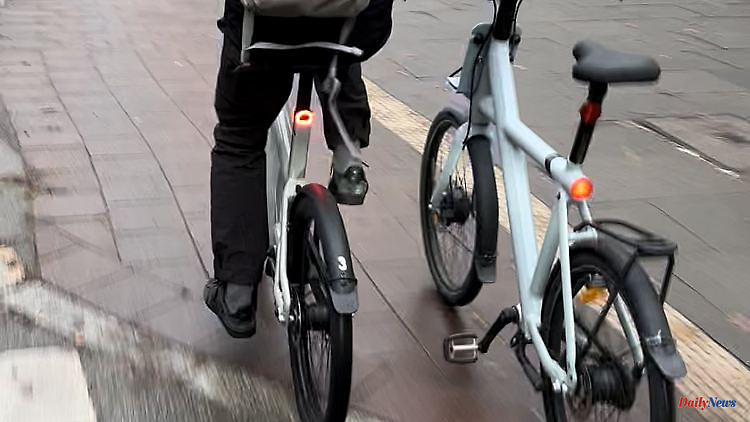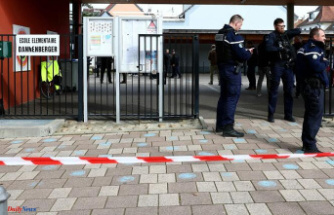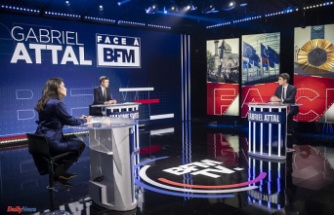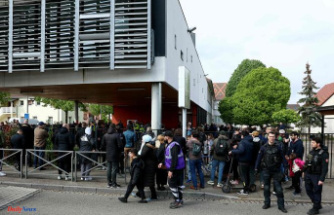Because their stylish e-bikes are constantly being stolen, the Dutch company VanMoof is introducing a special service: it sends bike hunters on electronic scavenger hunts for customers' bikes - with success.
A few years ago it was a kind of game that VanMoof employees in Amsterdam played on Fridays after work: Bike Hunting. The e-bikes from the Dutch company, which the brothers Taco and Ties Carlier founded in 2009 and which have won design awards, were often stolen from their owners.
At first, only the head of the company, Taco, went looking for the bikes himself with a Bluetooth tracker, but then more and more employees joined in. Since 2016, VanMoof has officially employed Bike Hunter full-time and part-time. The team consists of 25 hunters, based in Amsterdam, New York, San Francisco and Tokyo.
One of them is Daniel Marinello in Berlin. When VanMoof opened a small shop in Charlottenburg in 2015, the 31-year-old was the first employee there. Tracking down stolen bikes wasn't his main job back then, but it was already a passion: "I like the kick and see it as a challenge." When VanMoof opened a brand store in Mitte in 2020 and employed more and more employees, Daniel was able to really get started. Since then he has tracked down hundreds of bicycles in Berlin's backyards, prefabricated buildings, garages, cellars and warehouses and returned them to happy owners.
It is possible to locate the e-bikes, which cost from 2500 euros, because they have built in complex anti-theft technology. This includes tracking via GSM location. In the beginning, a self-developed scanner with an antenna was used, but now the bike hunters have a special app on their smartphones - Daniel likes to use both. In this way, the wheels can be located with an accuracy of up to around 100 meters.
But before the Bike Hunters hit the road, the first technical measures have long since started. If a bike owner reports a theft via the VanMoof app or account, the electronics are shut down and the bike is rendered virtually unusable. Location tracking is also activated. The bike then automatically sends signals, which the Bike Hunters receive and track on a map.
When Daniel is looking for a stolen bike, he spends hours or days looking at approximate coordinates and observing whether a bike is still moving. If the red dots on his display remain stable and are centered on two or three streets, that means for him: access. The Berlin chief bike hunter uses various Google services to first check the surroundings: which buildings are there, are there gardens and backyards, is the site accessible. "Then I'll go."
What follows is, in his words, "detective work": "I question residents, include the whole neighborhood in the search, show photos of the bike, walk down stairwells from bottom to top, ring the bell at apartments, hold my scanner in front of every door." If the bike is nearby, the Bluetooth tracker deflects with an acoustic signal. Daniel found at least 50 percent of the e-bikes stolen in Berlin in backyards.
For particularly difficult localization cases, the Dutchman uses the “Make Noise” trick: he can use an app to make an e-bike ring from a distance for 15 minutes. He likes to do that at 1am and several times in a row. So simple, so effective: Many times, after a nocturnal noise action, he drove along the coordinates of a stolen bike again in the morning - and suddenly it was outside on the sidewalk.
His assignments have often taken him abroad - to Paris, Strasbourg, Stockholm or London, for example. An e-bike, which was stolen during a test drive in Berlin, went to Stettin in Poland in a flash - and Daniel followed. Within the coordinates he ran there was also a police station, which he informed about his mission. He was then assigned two plainclothes officers who drove him around and gave him access to all the buildings. "That was extremely cool" - but without success.
However, the company's overall balance reads well: 75 percent of the bicycles were found and returned to their owners, says spokeswoman Sofia Gerung. In absolute numbers, there are almost 2,000 worldwide. The Bike Hunter service was launched in 2016 after a study found that theft is the number one reason people choose not to buy an e-bike.
Meanwhile, the services of the bicycle hunters are not in vain: The service can be used by anyone who has purchased their VanMoof bike with the additional package "Peace of Mind": It costs 348 euros for three years and guarantees that their stolen e- Bike or an equivalent is returned within two weeks.
Incidentally, Daniel's personal records are four bikes returned in one week and two in one day. The only thing the Hunter couldn't find was his own stolen VanMoof bike. "It's a bit of a stab in the heart."
The police only call the bike hunters in exceptional cases, such as when they themselves are in danger. "We come to get the bike, we are not the judiciary that catches criminals," says Daniel. If he has found a stolen e-bike that is locked using the built-in kicklock, he can open it with a special tool and take it with him. If the wheel is secured with an additional lock, bolt cutters are used.
At the very end comes the best for Daniel: "My personal drive is to give a customer his beloved bike back. Seeing the joy, that's just super cool." If the 31-year-old is on a particularly exciting mission, he has his GoPro camera with him and films the bike hunt. Some of his videos can be found on the VanMoof blog.
New Bike Hunters are always welcome. What you need to bring along: Patience, tenacity and bite. Interested parties can get in touch via the company's social channels.












